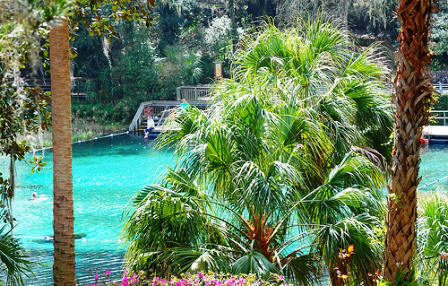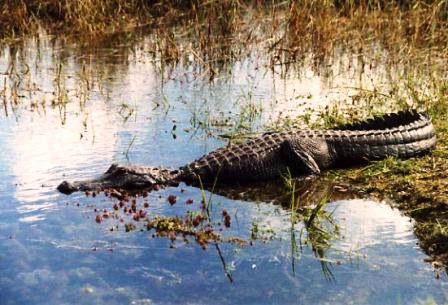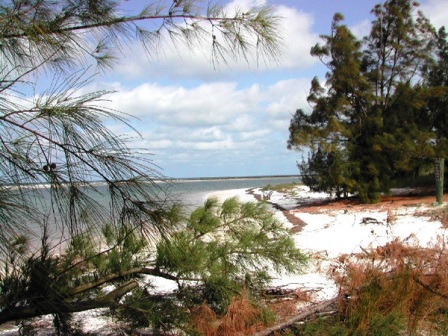The Rainbow River is located in the southwest corner of Marion County
Florida. It is formed by a first magnitude spring that is ranked fourth
in the state for volume of discharge. In addition to the springs located
at the headwaters, there are many smaller springs that discharge from
numerous caves, rock crevices, and sand boils the entire length of the
river. The Rainbow River is a gently winding river that is 5.7 miles
long and merges with the Withlacoochee
River at Dunnellon Florida. The headwaters is the anchor for the
Rainbow Springs State Park. This first magnitude spring is not one large
vent but is numerous vents that issue 400 - 600 million gallons of
crystalline water every day.
Rainbow Springs State Park is comprised of 1,459.07 upland acres (which
includes around 100 acres of wetlands) and 12.83 submerged acres. The
most significant natural feature is the first magnitude headspring basin
which produces between 400 - 600 million gallons of fresh water per day,
forming the Rainbow River. The looking glass waters of Rainbow Springs
come from several vents, not one large bubbling spring. The river itself
supports a wide variety of fish , wildlife, and plants, many within easy
viewing by visitors. In total, the park contains 11 distinct natural
communities, including sandhills,
flatwoods, upland mixed forests, and
hydric hammocks. Visitors are able to see a variety of wildflowers
in season; oak,
longleaf pines, magnolia,
dogwood, redbud, and hickory trees;
gray squirrels,
red-shoulder hawks,
swallowtail kites, barred
owls,
whitetail deer, and a wide variety of
wading birds. The relative peace and quiet of the winter season
offers much for the nature enthusiast. There is an interpretive room
located in the visitor center displaying historical, natural, and
cultural resources of the park.



